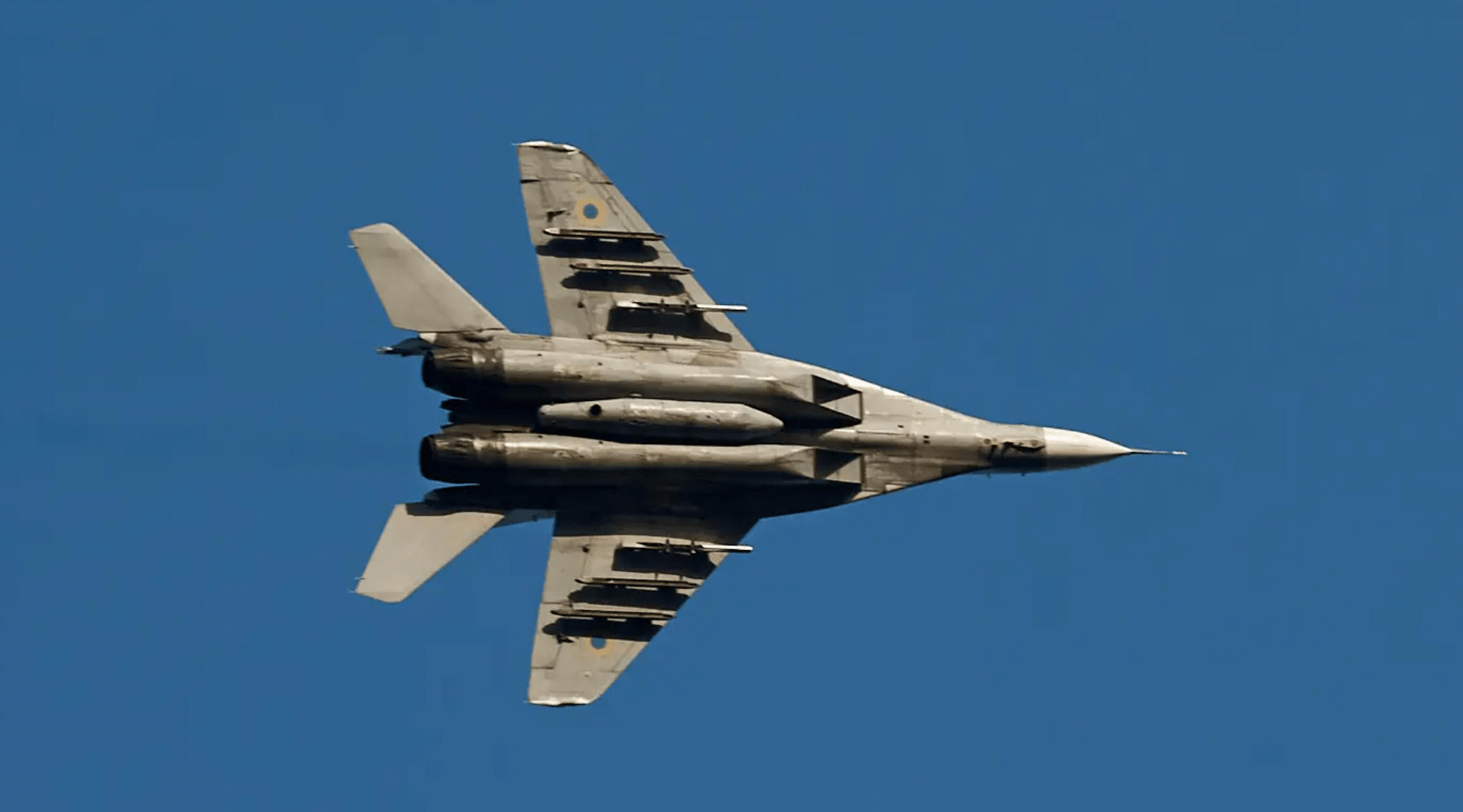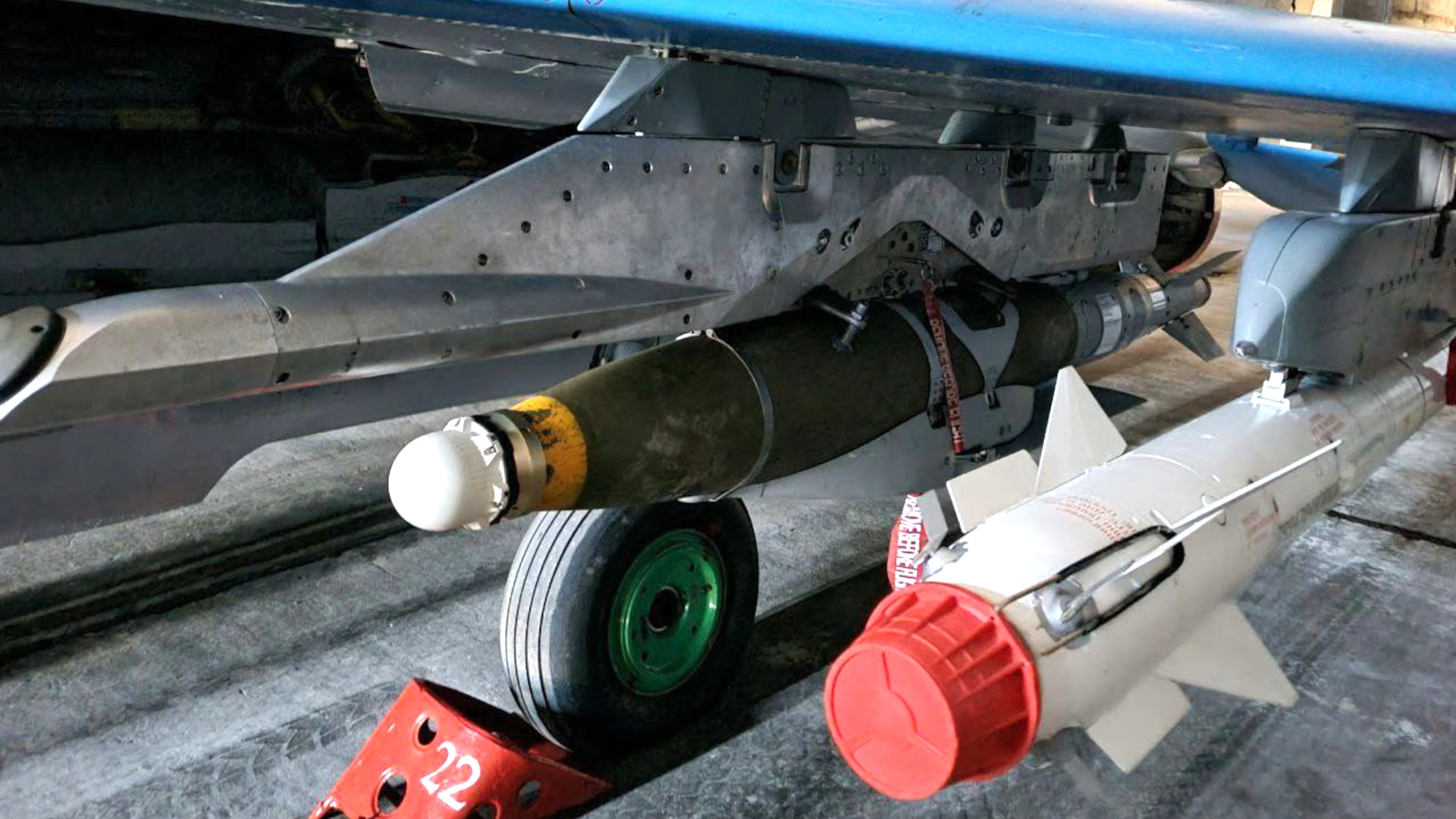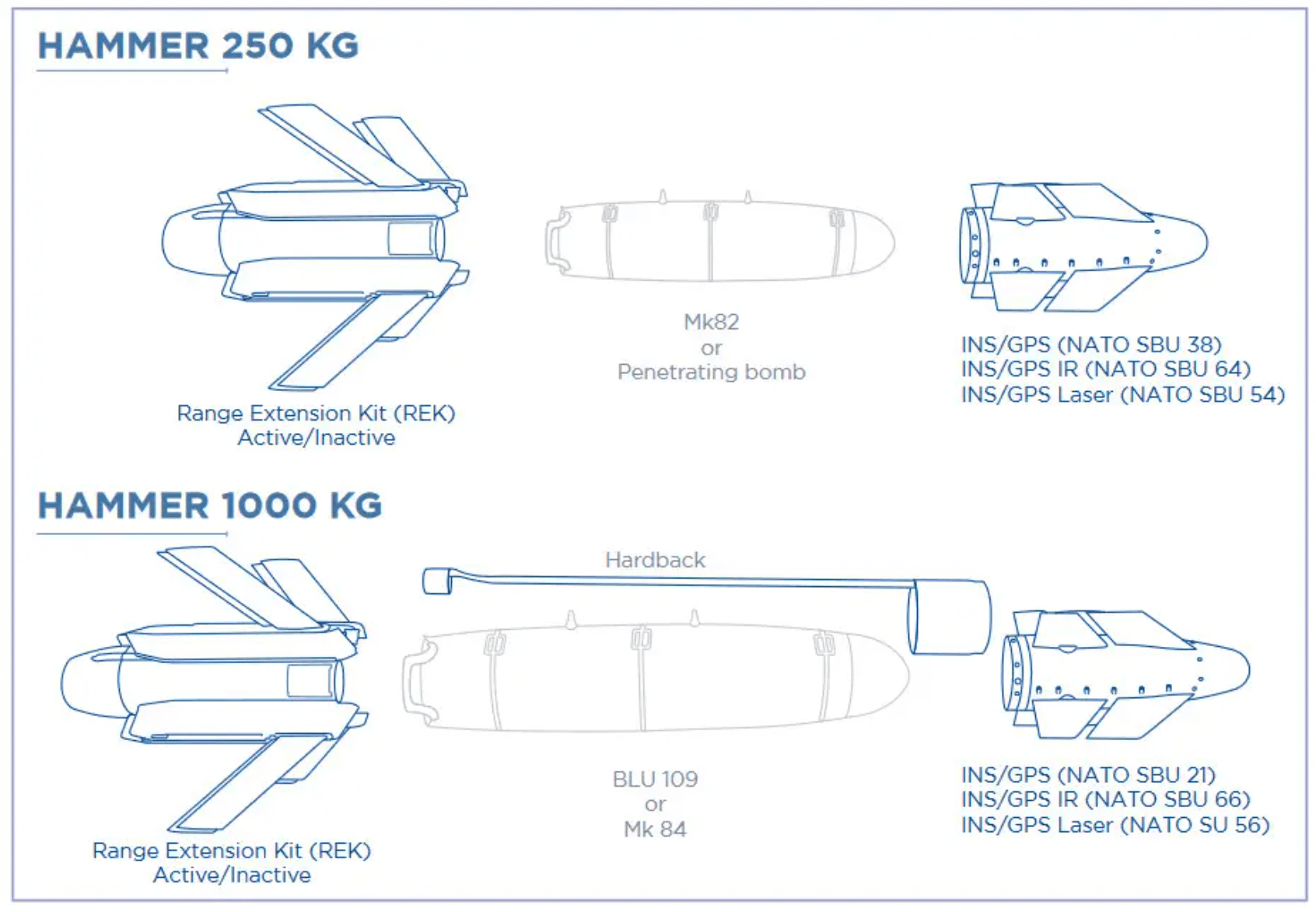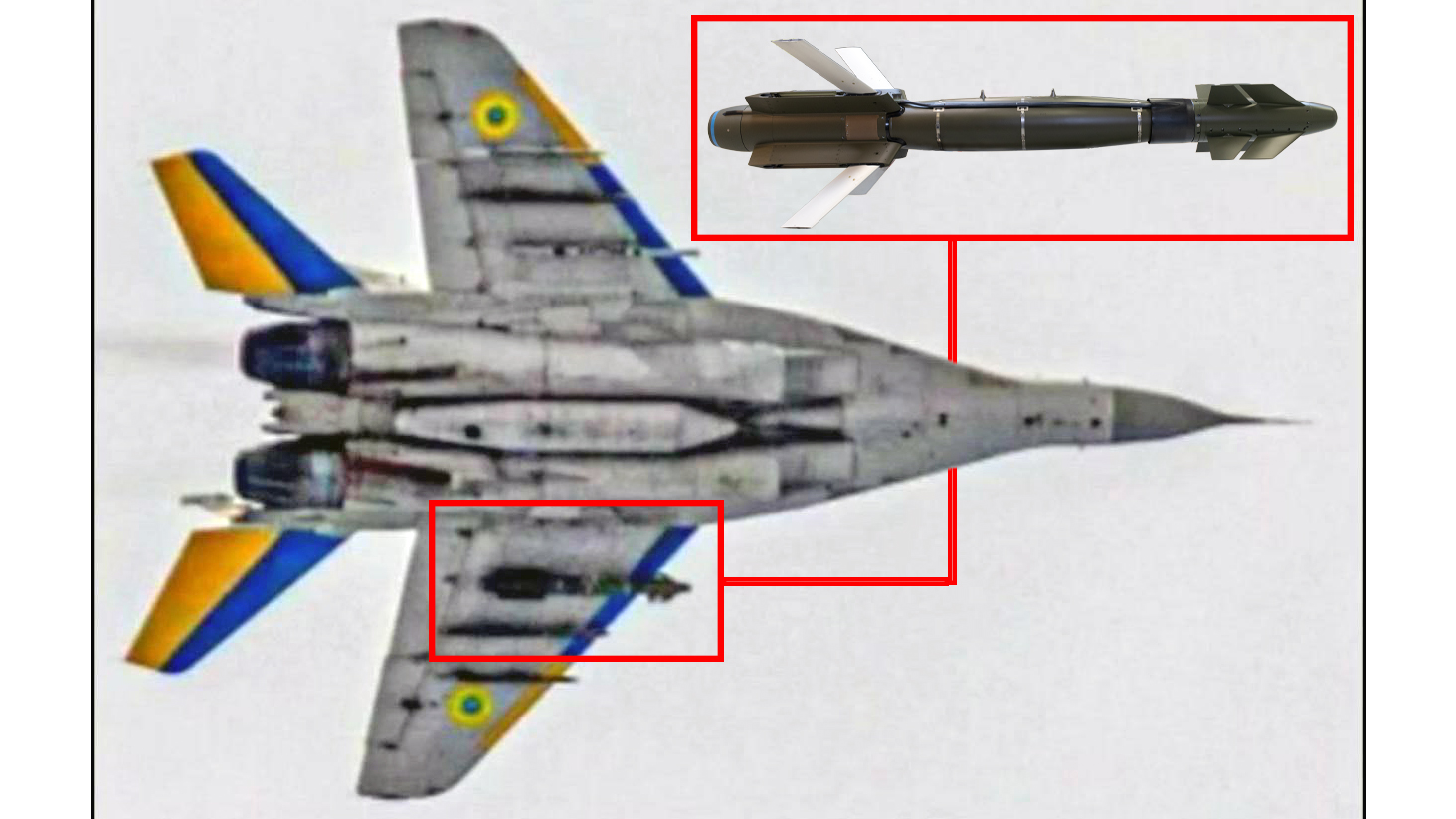The French-supplied Hammer precision-guided bomb has appeared for the first time in Ukrainian service on a MiG-29 Fulcrum fighter. The platform of choice, or at least one of them, this aircraft has previously been used by the Ukrainian Air Force to launch examples of the Western-supplied AGM-88 High-speed Anti-Radiation Missile, or HARM and Joint Direct Attack Munition-Extended Range, or JDAM-ER.
A photo began to circulate on social media today showing an underside view of a MiG-29, complete with the blue and yellow high-conspicuity markings that are designed to reduce the threat of ‘friendly fire.’ The aircraft carries a single 250-kilogram (551-pound) AASM 250 Hammer on the inner pylon under the port wing.
Interestingly, the pylons appear to be the same longer versions that provide the physical interface between the Soviet-era jet and the JDAM-ER. You can read more about these unusual pylons here, as well as some of the potential additional functions they may offer, especially in terms of weapon guidance and navigation.

Using the same pylon as the JDAM-ER — something we had predicted in the past was likely to happen — may well have been the reason for the Hammer appearing so quickly in Ukraine. Like the JDAM series, Hammer is a conversion kit for existing dumb bombs.

Earlier this month, before we actually saw evidence of the weapon’s integration on the MiG-29, the Ukrainian Ministry of Defense released a video of an airstrike on a Russian depot in the village of Kozachi Laheri, on the left bank of the Dnipro River in the Kherson region of Ukraine. This footage included a superimposed photo of an AASM 250 Hammer, with a Ukrainian inscription on the bomb body, a fairly obvious suggestion that it was used in this attack.
It was only on January 18 that France disclosed plans to send Hammers to Ukraine, with up to 50 arriving there on a monthly basis.
As we have described in the past, the Hammer is a unique rocket-boosted munition, known also under its French name Armement Air-Sol Modulaire (AASM, or Modular Air-to-Ground Armament).
Production of the weapon is today handled by Safran and the Hammer is available in a variety of versions.

The baseline Hammer is the 250-kilogram AASM 250, as seen in the photo that appeared today. This has a typical standoff range of around 45 miles, comparable with the JDAM-ER that Ukraine’s MiG-29s also use. Unlike the U.S. weapon, the Hammer uses a solid-fuel rocket to increase its range, rather than just a wing kit.
The Hammer kit can also be integrated with 100-kilogram (220-pound), 500-kilogram (1,102-pound), and 1,000-kilogram (2,205-pound) bombs, as well as ‘bunker-buster’-type bombs like the 2,000-pound-class U.S. BLU-109/B, and other general-purpose high-explosive types.

As well as the tail-mounted range-extension kit (REK), and the chosen bomb, the weapon includes a nose-mounted guidance section.
All Hammer versions feature a GPS-assisted inertial navigation system (INS) guidance package that is designed to strike static targets. But there are also multi-mode guidance options that add either imaging infrared or semi-active laser homing modes. Multi-mode guidance allows Hammer to be used against moving targets and enhances its overall accuracy, especially in GPS-denied environments.

The resolution of the available photo means it’s unclear what type of guidance is used on the Hammer shown under the MiG-29. Meanwhile, the superimposed photo of the weapon was cropped so as to omit the nose-mounted guidance section.
Regardless of the specific variants in use, Hammer provides the Ukrainian Air Force with a very significant weapon with which to engage Russian targets with a high degree of precision, even those that are located relatively deep behind the front lines. The range that Hammer offers should provide Ukrainian pilots with an additional degree of protection from the ever-present threat of Russian air defenses.

At this stage we don’t know exactly how Ukraine is employing its Hammers but, as we explained in the past, the roughly 45-mile range is achieved with a combination of the rocket booster and launch from high altitude. When released from lower altitude, where the Ukrainian Air Force often operates for its own protection, the range is reduced accordingly, down to around nine miles. Russian air defenses have continued to inflict a toll on the dwindling Ukrainian tactical jet fleet, including another MiG-29 loss over the Donetsk region last week.
Still, the fact Hammer has a motor means it can also be fired in a ‘pop-up’ mode, according to the manufacturer, which would provide a compromise between extended range and protection of the launch aircraft.
The versatility of the French-made weapon would be further enhanced were Ukraine to receive examples with the additional IIR or laser guidance. In the face of significant Russian electronic warfare efforts, including those aimed at Ukrainian munitions using GPS-assisted guidance, this flexibility would be a big bonus.

Aside from the useful precision standoff capabilities that Hammer offers Ukraine, there is the very significant factor of the sheer number of these weapons that are being pledged.
Coming at a time in which the continued supply of much-needed arms for Ukraine from both the United States and Europe is under question, a steady supply of Hammer munitions will be very welcome in Kyiv.
Now that the Hammer has properly broken cover in Ukrainian service, we will watch with interest to see how it is employed, if additional versions appear, and whether it gets integrated on additional aircraft types, too.
Contact the author: thomas@thewarzone.com
